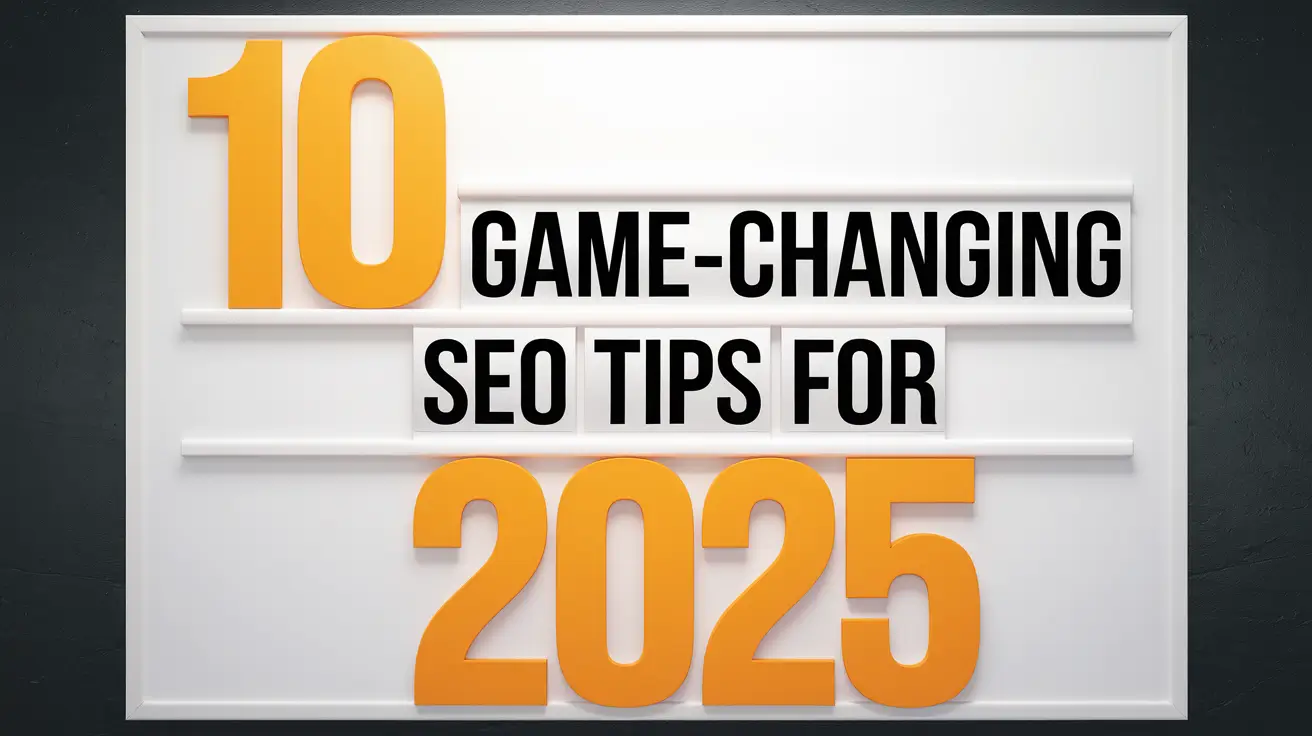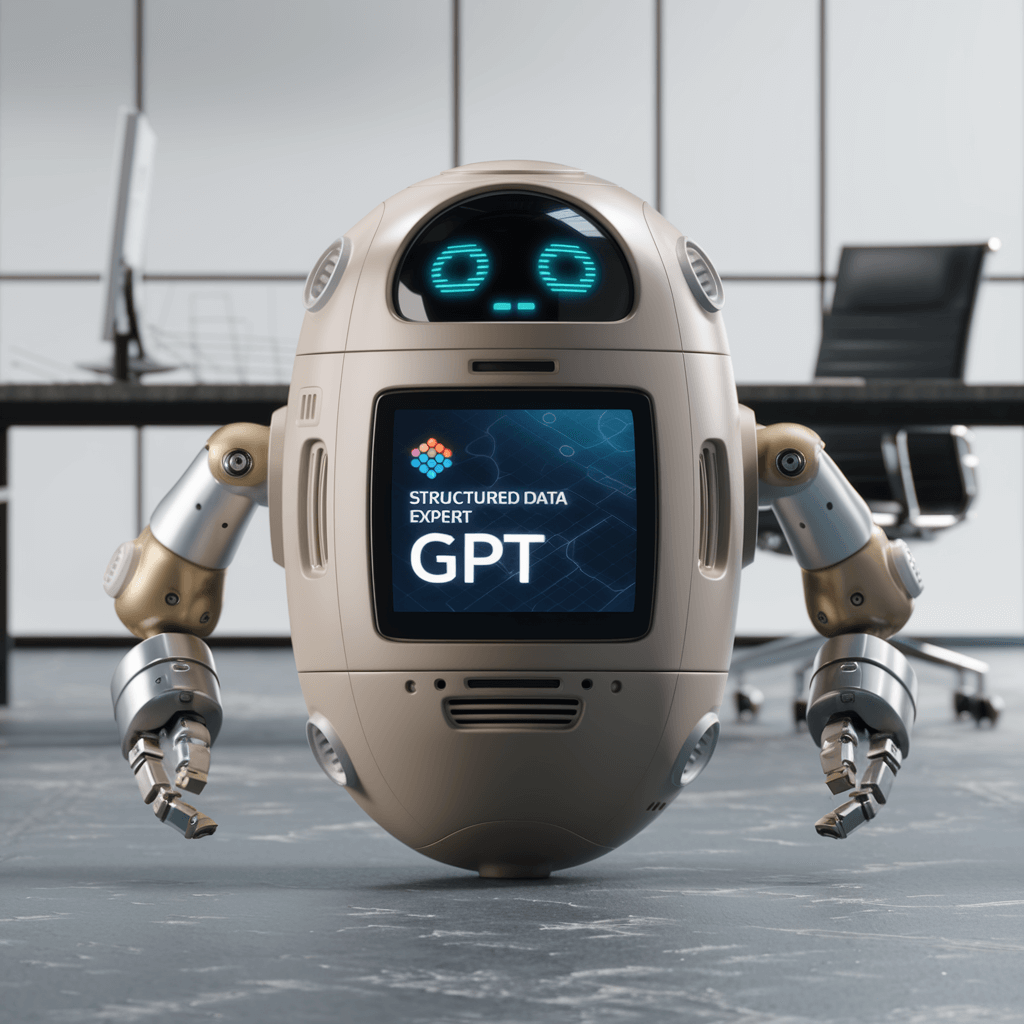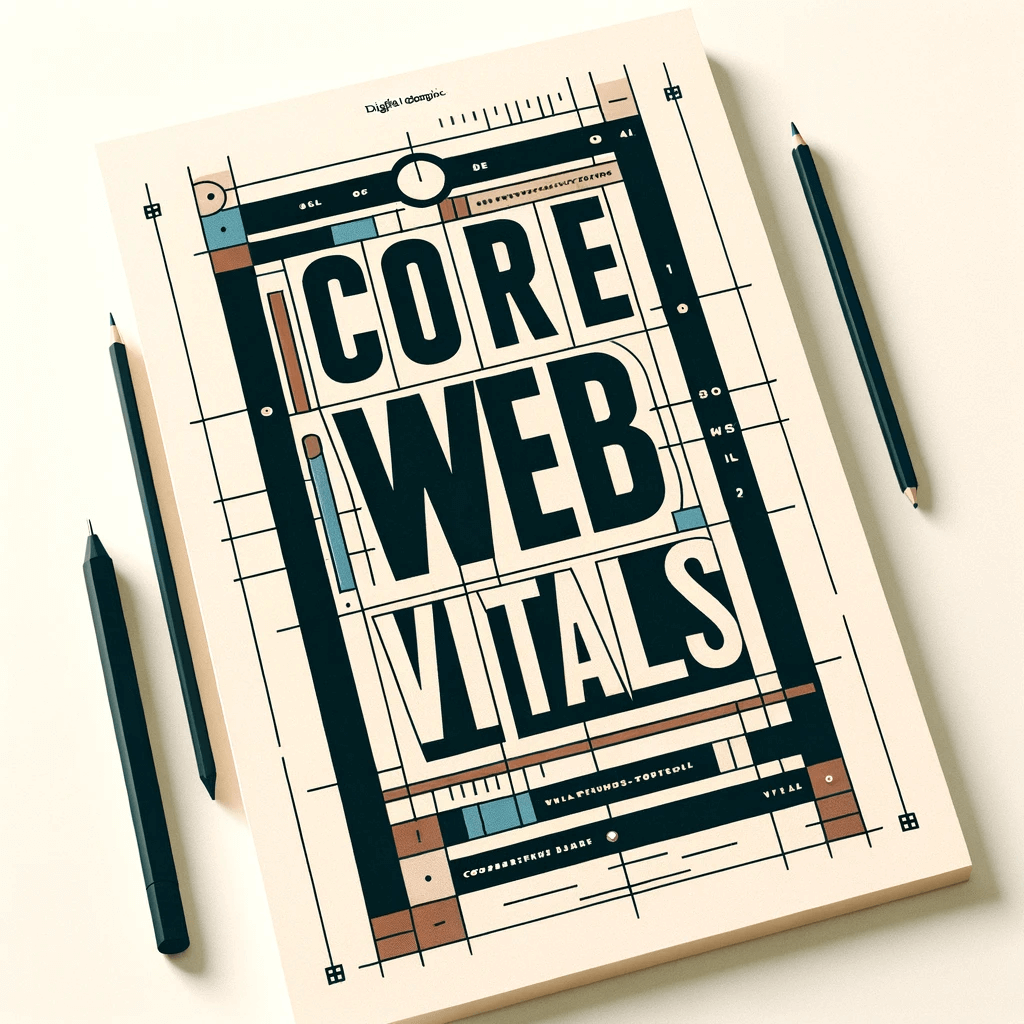
Debugging:
- Featured Image URL: https://seo-experiments.net/assets/10-game-changing-seo-tips-for-2025.webp
- Alt-Text:
Introduction: The Evolving Landscape of Search
The world of search engine optimization has undergone dramatic transformations as we've moved through 2025. The integration of artificial intelligence, evolving user behaviors, and Google's increasingly sophisticated algorithms have created a complex digital ecosystem that requires new approaches and strategies. This comprehensive guide will explore ten essential strategies that modern SEO professionals must master to succeed in this dynamic environment.
What makes 2025 particularly fascinating is the convergence of multiple technological advances that have fundamentally changed how users search for information and how search engines deliver results. The rise of AI-driven search engines like ChatGPT Search and Perplexity AI, processing over 100 million searches weekly, signals a significant shift in the search landscape. While Google maintains its dominance with 12 billion monthly queries, the growing adoption of alternative search methods suggests a future where traditional search engine optimization alone may not be sufficient.
1. AI-First Content Strategy: Beyond Traditional Optimization
Understanding the AI Revolution in Search
The integration of artificial intelligence in search has fundamentally transformed how content is discovered, interpreted, and ranked. Modern search engines no longer simply match keywords; they understand context, intent, and the complex relationships between different pieces of information. This shift requires a complete reimagining of content strategy that goes far beyond traditional SEO practices.
Creating Content for AI Understanding
To succeed in this new environment, content creators must develop materials that cater to both artificial intelligence systems and human readers. This dual-audience approach requires:
Semantic Structure and Organization
Content must be organized in a way that helps AI systems understand the relationships between different concepts. This means creating clear topic clusters, using appropriate heading hierarchies, and establishing logical connections between related pieces of content. Your content should form a comprehensive knowledge graph that AI systems can easily navigate and understand.
Context and Entity Relationships
Modern content strategy requires a deep understanding of entity relationships and how different concepts connect. This means:
Identifying and defining key entities within your content
Establishing clear relationships between related concepts
Creating content that addresses both primary and secondary user intents
Building comprehensive topic coverage that answers related questions
Technical Implementation
The technical aspects of AI-first content include:
Implementing schema markup to provide clear context
Using natural language processing tools to analyze and optimize content
Creating clear content hierarchies with proper HTML structure
Maintaining consistent internal linking patterns that reinforce topical relationships
Measuring AI Content Success
Success in AI-first content requires new metrics and evaluation methods:
AI visibility scores in various search platforms
Content comprehensiveness ratings
Topic authority measurements
Semantic relevance scores
2. Mastering E-E-A-T: The Human Element in Search
The Evolution of Trust Signals
Experience, Expertise, Authoritativeness, and Trustworthiness (E-E-A-T) have become cornerstone principles in search optimization. The addition of the second 'E' for Experience marks a significant shift in how Google evaluates content quality, emphasizing the importance of practical, real-world expertise alongside theoretical knowledge.
Demonstrating Real-World Experience
Author Expertise
Creating strong author profiles has become crucial in 2025. This includes:
Detailed professional biographies
Portfolios of past work and achievements
Industry certifications and qualifications
Published works and speaking engagements
Social proof and industry recognition
Content Authority Development
Building content authority requires a multi-faceted approach:
Original research and data analysis
Case studies from real-world applications
Expert interviews and industry insights
Practical examples and implementation guides
Regular updates with current information
Building Trustworthiness
Technical Trust Signals
Implement technical elements that reinforce trust:
Secure website protocols
Clear privacy policies
Transparent contact information
Professional website design
Mobile optimization
Content Trust Factors
Develop content that builds trust through:
Clear sourcing and citations
Regular fact-checking and updates
Balanced presentation of information
Expert contribution and verification
User feedback integration
Measuring E-E-A-T Success
Track the impact of your E-E-A-T improvements through:
User engagement metrics
Expert recognition and citations
Industry authority measurements
Trust signal effectiveness
Content credibility score
3. Technical SEO and User Experience Integration
The Convergence of Technical and User Factors
The traditional separation between technical SEO and user experience has completely dissolved in 2025. Modern search algorithms have become sophisticated enough to evaluate sites based on how well they serve user needs, making technical optimization inseparable from user experience considerations.
Core Web Vitals Mastery
Largest Contentful Paint (LCP)
Optimizing LCP requires a comprehensive approach:
Advanced image optimization techniques
Implementing WebP and AVIF formats
Using responsive images
Implementing lazy loading
Optimizing delivery networks
Server performance optimization
Implementing edge computing solutions
Utilizing advanced caching strategies
Optimizing database queries
Implementing service workers
First Input Delay (FID)
Minimizing FID involves several technical considerations:
JavaScript optimization
Code splitting and lazy loading
Critical path optimization
Efficient event handling
Resource prioritization
Browser performance
Main thread optimization
Reducing render-blocking resources
Implementing efficient animations
Optimizing third-party scripts
Cumulative Layout Shift (CLS)
Preventing layout shifts requires careful planning:
Layout stability techniques
Pre-allocated space for dynamic content
Proper image dimension handling
Font loading optimization
Advertisement space management
Responsive design implementation
Fluid typography
Flexible layouts
Stable navigation elements
Content hierarchy preservation
Mobile-First Implementation
Responsive Design Evolution
Modern responsive design goes beyond basic breakpoints:
Advanced viewport handling
Dynamic content adaptation
Touch interaction optimization
Performance-based content serving
Mobile User Experience
Creating optimal mobile experiences involves:
Touch-friendly navigation
Simplified user flows
Optimized forms and inputs
Content prioritization for mobile users
Performance Monitoring and Optimization
Comprehensive Monitoring
Implement advanced monitoring systems:
Real-user monitoring (RUM)
Synthetic testing
Performance budgets
User behavior tracking
Continuous Optimization
Establish ongoing optimization processes:
Regular performance audits
Automated testing procedures
Competition benchmarking
User feedback integration
4. Multi-Modal Search Optimization
As we move deeper into 2025, the way users interact with search engines has fundamentally changed. No longer limited to typing queries into a search box, users now seamlessly switch between different search modalities, from voice commands to image searches and everything in between. This shift requires a completely new approach to SEO that accounts for these varied search behaviors and ensures visibility across all search formats.
Understanding Search Evolution
The search landscape has evolved to encompass multiple modes of interaction:
Traditional text search
Voice search
Visual search
Augmented reality search
Hybrid search methods
Voice Search Optimization
Natural Language Processing
Optimize for conversational queries:
Question-based content structure
Long-tail keyword integration
Conversational featured snippets
Local search optimization
Technical Implementation
Implement voice search-friendly features:
Speakable schema markup
FAQ structured data
Clear answer formatting
Mobile optimization
Visual Search Enhancement
Image Optimization
Comprehensive image optimization includes:
High-quality visual assets
Detailed alt text
Contextual placement
Visual search markup
Visual Search Technology
Implement advanced visual search features:
Product recognition capabilities
Similar item suggestions
Visual search integration
AR compatibility
Local Search Integration
Geographic Optimization
Enhance local search visibility:
Local business schema
Location-specific content
"Near me" optimization
Local citation building
Multi-Location Strategy
Develop strategies for multiple locations:
Location page optimization
Local content creation
Regional targeting
Location-specific metrics
5. Mastering Video SEO and Content
The Rise of Video Search
Video content has become increasingly central to search visibility in 2025. With the evolution of search algorithms and user preferences, video optimization has moved from being optional to essential. Understanding how to create, optimize, and distribute video content effectively can significantly impact your overall SEO success.
Strategic Video Content Development
Content Planning and Creation
Develop a comprehensive video strategy:
Identify key topics and themes
Map content to user journey stages
Create content calendars
Align with overall SEO goals
Video Types and Formats
Different video formats serve different purposes:
Educational content and tutorials
Product demonstrations
Expert interviews
Behind-the-scenes content
Live streaming events
User-generated content integration
Technical Video Optimization
Platform-Specific Optimization
Optimize for different platforms:
YouTube SEO strategies
Keyword research for videos
Thumbnail optimization
Playlist creation and management
Channel optimization
Social media platform requirements
Format specifications
Duration guidelines
Engagement optimization
Cross-platform distribution
Video Technical Elements
Implement technical best practices:
Video schema markup
Transcript optimization
Closed captions
Multi-language support
Video sitemaps
Loading speed optimization
6. Advanced Analytics and Performance Tracking
In the complex digital landscape of 2025, making decisions based on solid data has become more crucial than ever. The sheer volume of available data and the sophisticated tools for analyzing it have transformed how we approach SEO optimization. Understanding and effectively utilizing this data can make the difference between success and failure in competitive search markets.
Comprehensive Data Collection
User Behavior Analytics
Track detailed user interactions:
Heat mapping
Session recordings
User flow analysis
Conversion path tracking
Engagement metrics
Exit intent analysis
Technical Performance Metrics
Monitor technical aspects:
Core Web Vitals tracking
Server performance
Mobile responsiveness
Loading time analysis
Error monitoring
Resource usage
AI-Powered Analytics
Machine Learning Integration
Utilize AI for deeper insights:
Pattern recognition
Anomaly detection
Predictive analytics
User behavior modeling
Content performance prediction
Automated Reporting
Implement sophisticated reporting:
Real-time dashboards
Automated insights
Custom report generation
Competitive analysis
ROI tracking
7. Content Experience Optimization
In 2025, creating great content is no longer just about providing information – it's about crafting complete, immersive experiences that engage users on multiple levels. The rise of interactive technologies, personalization capabilities, and sophisticated user tracking has transformed how we approach content creation and delivery. Modern content experience optimization focuses on creating dynamic, personalized journeys that adapt to user preferences and behaviors while maintaining strong SEO performance.
User-Centric Content Design
Content Structure and Format
Create engaging content experiences:
Clear information hierarchy
Scannable layouts
Interactive elements
Mobile-first design
Multimedia integration
Progressive disclosure
Personalization Strategies
Implement content personalization:
User segment targeting
Behavioral adaptation
Geographic customization
Device-specific optimization
Interest-based recommendations
Interactive Content Elements
Engagement Features
Add interactive elements:
Calculators and tools
Quizzes and assessments
Interactive infographics
Augmented reality elements
User polls and surveys
Community features
Gamification Elements
Incorporate game-like features:
Progress tracking
Achievement systems
Interactive challenges
Social competition
Reward mechanisms
Content Performance Optimization
Content Testing
Implement comprehensive testing:
A/B testing
Multivariate testing
User testing
Performance monitoring
Feedback collection
Iteration and Improvement
Maintain continuous improvement:
Regular content audits
Performance analysis
User feedback integration
Competitor monitoring
Trend adaptation
8. Digital PR and Modern Link Building
Link building has evolved far beyond simple backlink acquisition in 2025. Today's digital PR and link building strategies require a sophisticated approach that combines content creation, relationship building, and strategic outreach. Success in this area demands a deep understanding of your industry's ecosystem and the ability to create content that naturally attracts attention and links.
Strategic Content Development
Creating Linkable Assets
Develop high-value content that naturally attracts links:
Original research and studies
Industry surveys and reports
Data visualization tools
Interactive resources
Comprehensive guides
Expert roundups
Trend analysis
Proprietary data insights
Content Distribution
Implement sophisticated distribution strategies:
Targeted outreach campaigns
Industry influencer partnerships
Social media amplification
Newsletter partnerships
Content syndication
Press release optimization
Relationship Building and Networking
Industry Connections
Develop strong professional networks:
Journalist relationships
Industry expert connections
Professional organization memberships
Speaking engagements
Conference participation
Community involvement
Digital PR Tactics
Execute modern PR strategies:
Story pitching
Expert commentary
News hijacking
Trend monitoring
Crisis management
Brand monitoring
Link Quality Management
Link Portfolio Analysis
Maintain healthy link profiles:
Authority assessment
Relevance evaluation
Link diversity
Anchor text distribution
Geographic spread
Industry focus
Risk Management
Implement protective measures:
Link audit procedures
Toxic link removal
Competitor monitoring
Algorithm update preparation
Documentation maintenance
9. E-Commerce SEO Excellence
E-commerce SEO has become increasingly complex in 2025, with the integration of AI, the evolution of shopping graphs, and changing consumer behaviors all playing crucial roles. Success in this space requires a deep understanding of both technical optimization and user psychology, combined with the ability to present products in ways that appeal to both search engines and potential customers.
Product Page Optimization
Content Enhancement
Create comprehensive product information:
Detailed descriptions
Technical specifications
Use case scenarios
Comparison guides
Customer reviews
Expert opinions
Related products
Buying guides
Technical Implementation
Implement e-commerce best practices:
Schema markup
Inventory management
Price updates
Availability status
Shipping information
Return policies
Security certificates
Shopping Graph Integration
Data Feed Optimization
Maintain accurate product data:
Product categorization
Attribute mapping
Price monitoring
Stock level tracking
Image optimization
Feed automation
Marketplace Integration
Optimize for multiple platforms:
Google Shopping
Amazon optimization
Social commerce
Marketplace presence
Multi-channel strategy
10. Future-Proofing Your SEO Strategy
As we progress through 2025, the pace of technological change in SEO continues to accelerate. Staying competitive requires not just keeping up with current trends but actively preparing for future developments. A future-proof SEO strategy must be both robust enough to maintain current performance and flexible enough to adapt to new technologies and methodologies as they emerge.
Emerging Technology Adoption
AI Integration
Prepare for AI advancement:
Machine learning implementation
Natural language processing
Automated optimization
Predictive analytics
Content automation
Personalization engines
New Search Paradigms
Adapt to evolving search methods:
Voice search optimization
Visual search preparation
AR/VR compatibility
IoT device optimization
Ambient computing
Sustainable Growth Strategies
Resource Management
Build sustainable processes:
Team development
Tool evaluation
Budget allocation
Project prioritization
Risk assessment
ROI analysis
Knowledge Management
Maintain organizational expertise:
Documentation systems
Training programs
Best practice guides
Process optimization
Knowledge sharing
Future Planning
Trend Monitoring
Stay ahead of industry changes:
Algorithm updates
Technology trends
User behavior shifts
Competitive analysis
Market research
Strategic Development
Plan for long-term success:
Goal setting
KPI development
Strategy adjustment
Innovation planning
Growth forecasting
Conclusion
Success in SEO for 2025 requires a comprehensive understanding of these ten key areas and their practical implementation. The landscape continues to evolve, making it crucial to stay informed and adaptable. By focusing on these core strategies while remaining flexible enough to incorporate new developments, organizations can build a strong foundation for sustainable SEO success.
Remember that SEO is no longer just about rankings – it's about creating genuine value for users while maintaining visibility in an increasingly complex digital ecosystem. The key to success lies in balancing technical excellence with user experience, while constantly adapting to new technologies and user behaviors.
Keep monitoring industry developments, testing new approaches, and refining your strategies based on real-world results. The future of SEO will continue to evolve, but these fundamental principles will help ensure your continued success in the digital landscape.



